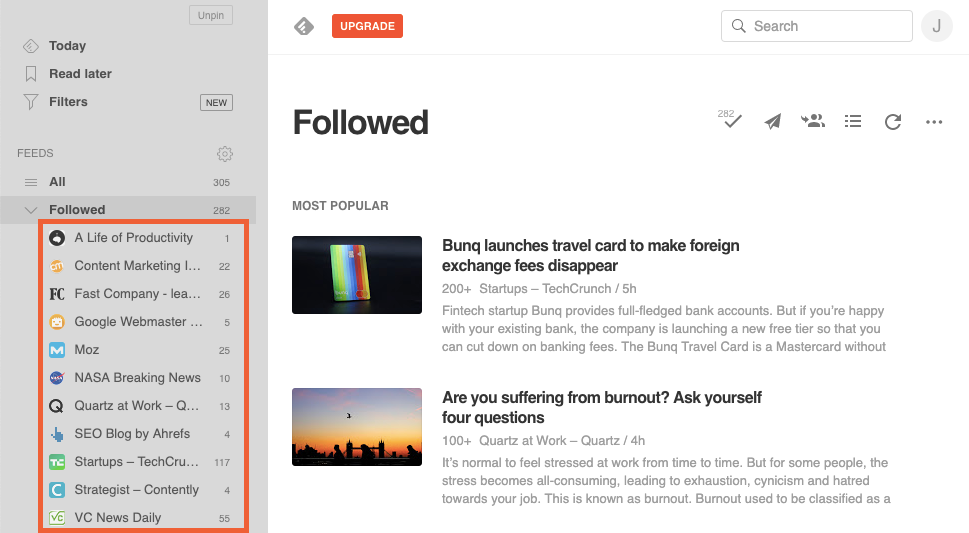
Here are some tips to help improve your content strategy. First, don't forget that your audience doesn't have the ability to tell stories. They are buyers. Not storytellers. Create content that provides value for your readers. Track your results, too! Finally, be consistent! Here are some more tips to improve your content-marketing strategy.
In content marketing, the audience isn’t only buyers.
Content marketing must stand out from all other types of advertising. Brands must consider the interests, preferences, habits, and lifestyle of their customers, rather than focusing solely on products. Red Bull, for example has created content around subjects its audience is passionate about such as sports. Red Bull has increased brand loyalty because they provide content that interests them. Red Bull isn't just a media company, they also sell energy drinks.
The buyer journey begins when an audience is in the 'unaware' stage. It is usually triggered by a situation that causes pain or creates an impulse to purchase. Your content should educate this audience about your solution if you are marketing to them. This will make sure your content is relevant to the audience and has more impact that lead generation.
Content marketing is not about being a storyteller.
If content marketing is used as a means of storytelling, then you aren't alone. There are thousands of content marketers trying to implement this strategy. But most don't succeed. The problem is that most stories have a plot, a main character, and a resolution. But how can you create compelling stories? To do that, you need to know your audience, which can be figured out by creating buyer personas.

Brand storytelling can be a great way for brands to connect with their customers. Storytelling is more appealing to the emotional side than the tactical arguments. A brand's story is like a novel; it appeals to the emotional side of the consumer, while a tactical argument about the product rarely gets the attention it wants. Storytelling is the art of using non-fictitious characters and plot to market. The results are content that is more interesting and compelling.
You should place value first
When creating a content marketing strategy, you should focus on offering your audience value. Your content should answer prospects' questions, and explain why they should purchase your product. This is because customers are bombarded with marketing messages every day. Provide valuable content to your audience and you will gain an advantage in the industry.
Content marketing is best done through three channels: email and social media. Search engine optimization is another key channel. Each channel has its own characteristics and strengths. Review your content marketing strategies to find the best channels. Next, identify the most successful channels and focus your efforts on them. These channels will be the foundation of your marketing strategy.
It is important to keep track of results
The key to an effective content marketing strategy is tracking results. KPIs (key performance indicators) are used to determine if your efforts have been successful. You can track these metrics to make changes to your strategy. Depending on your target audience, you can create various types of content. Be sure to target your customers with your content. It is a good place start to determine the content types your target markets like.

Management and your team need high-level KPIs. These can be useful for gauging overall performance but don't show you what is working or what needs to changed. It's best to establish more detailed metrics and then track them against these. You can make better decisions and plan for the future with the data. It is possible to predict future growth. Ultimately, data can make your content strategy more accurate.
FAQ
Why is content so important
Every digital marketing campaign is dependent on content. If you want to attract new customers, then you need to create valuable content for them. Blogs are the best way of doing this. Blogging can help you build authority in your field, making you more trustworthy. This trustworthiness increases your credibility, which in turn leads to higher search engines rankings. And when you rank high, you get traffic from organic searches.
How much does content marketing cost?
The cost of content marketing depends on whether it's an outsourced solution or something you do all yourself. Outsourcing content marketing services is usually less expensive than hiring full-time staff, and allows you to scale up quickly when you require more coverage.
According to HubSpot research, outsourcing content production costs around $5 per lead generated (for B2B companies) compared to $22 per lead generated (for consumer brands).
However, there are plenty of web resources that provide free content marketing tools that you can use to create engaging content that converts.
There are many methods to optimize content for search engines like Google or Bing. You have the option to write original articles or guest post on blogs. You can also curate content from different websites and reuse existing materials.
If you go down the route of self-produced content, you'll need to learn how to produce great content. However, once you are proficient in this skill, it will be easy to produce content.
Start by creating basic landing pages with WordPress. Then, you can move on to building your website. This allows you to create a portfolio.
How much should I invest in content marketing?
It depends on how many leads your company wants to generate. Depending on your industry, the average cost per lead is between $5 and $10. We spent $20 per lead when we started our business. Today, we spend an average of $6-7 per lead.
How does Content Marketing Strategy work for me?
A Content Marketing Strategy gives you access to data you wouldn't otherwise have. This data allows to identify which types and content perform well.
It helps you identify the strategies you should use to drive more traffic to your site. It provides insight into your audience's behavior, which can help you create better content.
This means that you will be able to spend less time worrying over what type of content works and more on what doesn’t.
You can also use a Content Marketing Strategy to determine which messages are most popular with your audience.
You can find out their preferred content by analysing these messages. So that you can continue creating similar content and keeping those ideas in motion.
Finally, a Content Marketing Strategy helps you track your content's performance. You will see which content types are performing better as you share more.
A Content Marketing Strategy, in other words, is key to ensuring that your content performs as expected.
Statistics
- Forty-seven percent of buyers view 3 to 5 pieces of content before engaging with a sales representative. (mailchimp.com)
- According to research compiled by Coschedule: Companies that publish 16+ blog posts a month get as much as 3.5x as much traffic as those that publish 0-4 posts a month. (criteo.com)
- According to our research, brand awareness, attracting traffic, and generating leads remain the key content marketing goals in 2022. (semrush.com)
- We found that 40% of businesses don't have a documented strategy yet. (semrush.com)
- An example of an overarching goal could be: "In 2022, we want to achieve a 20% increase in revenue created by organic content and generate 15,000 MQLs with a budget of $30,000." (semrush.com)
- Content marketing produces 3X more leads per dollar spent. Content marketing costs 62% less than traditional marketing. (criteo.com)
- Progress indicators (0–100%) allow each team member to see how attainable each goal is and understand what remains to be accomplished. (semrush.com)
- Measure your goals with a progress indicator of 0-100%. Make your goals collaborative and transparent (semrush.com)
External Links
How To
Infographic Creation Tips for Content Marketing
Infographics are an effective way to explain complicated concepts clearly and make information understandable. Infographics can be used to communicate your message.
For creating an infographic you'll need software such as Adobe Illustrator and Photoshop. These programs can be used for drawing out shapes and elements to represent data. After that, you can add fonts and colors to make it look professional. Once your design has been created, you can start uploading images from Unsplash/Pixabay to incorporate into it.
Check out existing infographics online to get some ideas. If you want to show calories in certain foods, then you can take a picture or diagram of a food pyramid, and add pictures of the foods. Or, you might choose to look up how much sugar is in soda pop and change that number to a picture of a bottle of Coke.
Once you've created your infographic, share it on social media channels like Facebook or Twitter. This makes it easy for people unfamiliar with the concept to learn. If you decide to post your infographic on social media platforms, include hashtags so others can see what you're talking about. Users can follow along with specific conversations using hashtags.
An infographic is a shorter version of a blog post. An average blog post is between 2000 and 5000 words, while an infographic takes 500 to 1000 words. That means you can get more information across in less space.
Remember that not all viewers can read small font sizes when designing an infographic. Your graphics should be large enough in font size and not rely on too much color. Also, ensure all text is legible.
These are additional tips:
-
Choose an Infographic Template. There are many online templates that you can download or print. Canva, Piktochart and Google Slides are the most used templates.
-
Make your Infographic. To create your infographic, use the template. You can use whatever media is most appropriate for your audience. If you want to create an infographic on the best places for food in Seattle, for example, you might use photos from local restaurants.
-
Add Text. Add text once your infographic is created.
-
Add Images. Your infographic can also include images. These images can include charts, graphs and icons. If you wish to include a picture, ensure it is relevant.
-
Make It Interactive. You can also add interactive elements such buttons, maps, links, and other features. This will help engage your audience.
-
Share. Share your infographic when you are done.
-
Measure. How well did your infographic perform? Did people click on your website? Did they sign up to your email list? What was their reaction?
-
Improve. Is there anything you can do to improve your infographic Do you think your infographic could be better?
-
Repeat. Do it again.